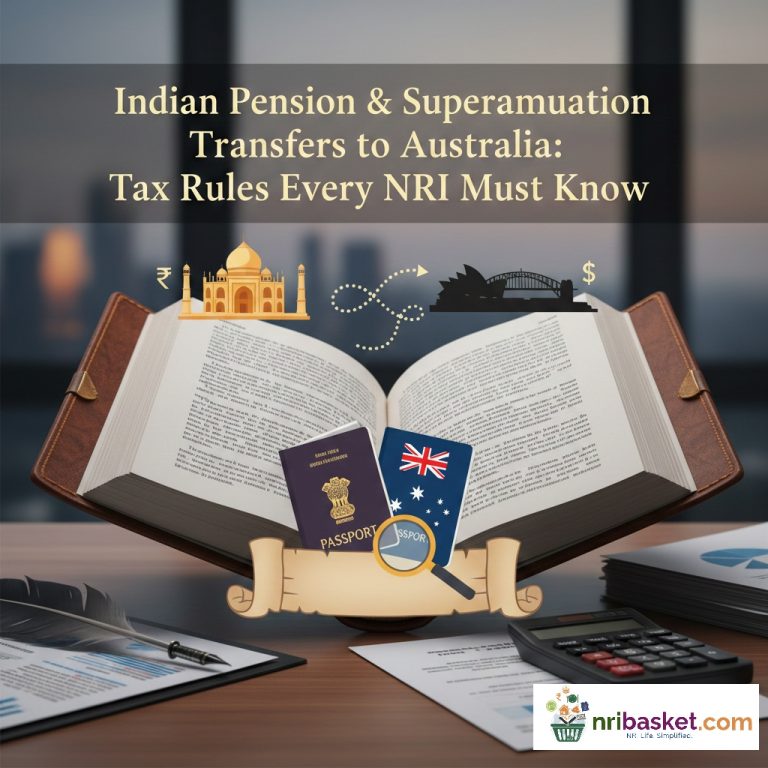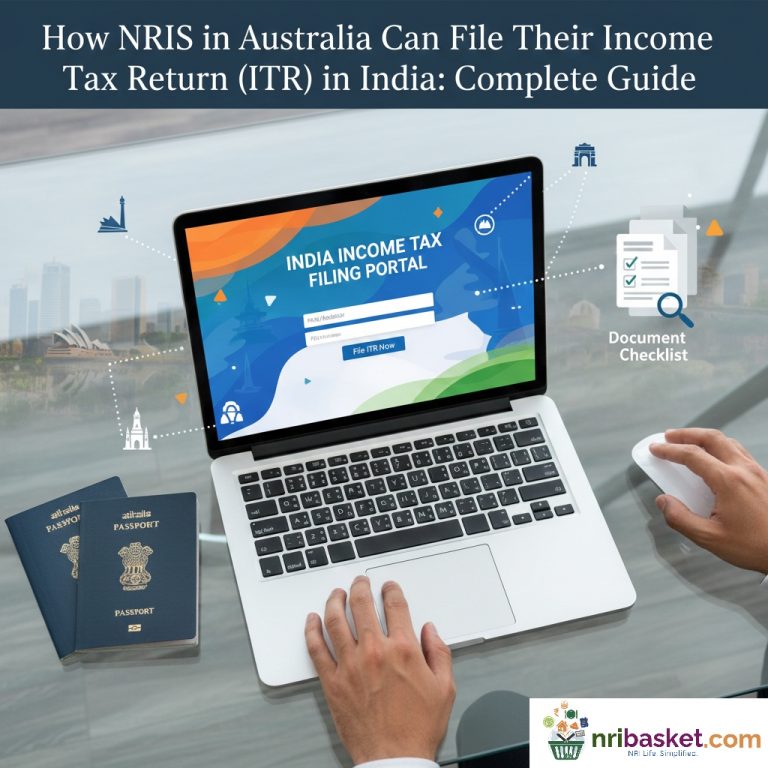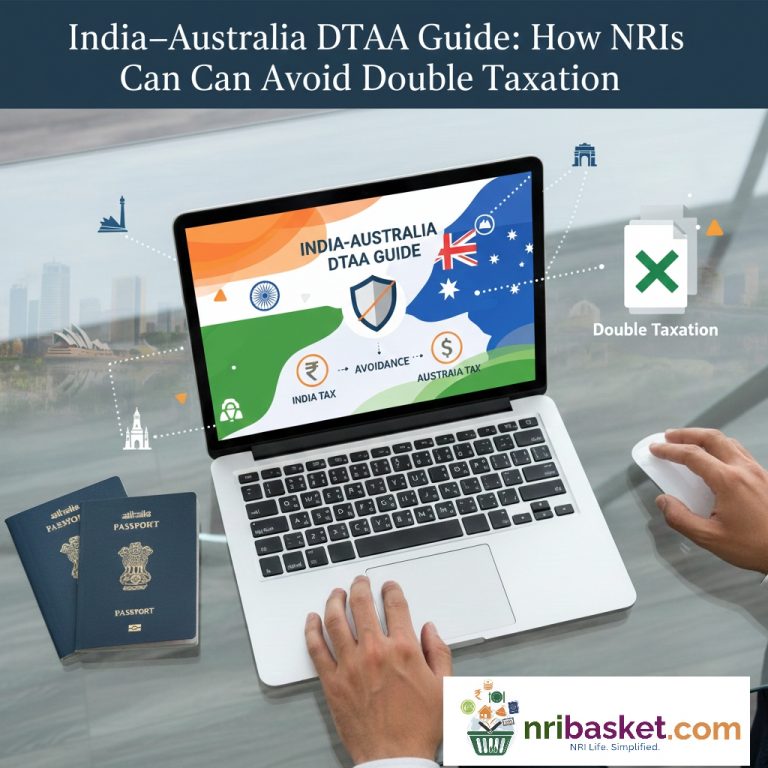
TDS in India vs. Foreign Tax Credit in Canada
Understand TDS on Indian income and claim foreign tax credit in Canada. Smart NRI guide to avoid double taxation and save more on cross-border income.
TDS in India vs. Foreign Tax Credit in Canada: A Tax Optimization Strategy for NRIs
Many NRIs living in Canada continue to earn income from India — such as interest on NRO accounts, rent, or dividends.
However, they often face a common issue: taxes being deducted in both countries.
Understanding how TDS (Tax Deducted at Source) in India and the Foreign Tax Credit (FTC) in Canada work can help you avoid double taxation and save significant money.
This easy-to-understand guide explains how TDS applies to your Indian income, how to claim foreign tax credit under the Canada–India Double Taxation Avoidance Agreement (DTAA),
and how to use both systems to legally reduce your total tax bill.
Have a question or want us to add your scenario?
Tell us what you need — we’ll update this guide and answer publicly so other NRIs can benefit. Your question may be featured in the next update.
If you’re an NRI with an NRO account or any income in India, these FAQs will help you report it correctly in both countries and plan a smarter tax strategy.
Long Answer: TDS (Tax Deducted at Source) means tax is automatically deducted by banks, tenants, or companies before they pay you income such as rent, interest, or dividends. The deducted amount is paid to the Indian government on your behalf.
Long Answer: If you’ve already paid tax on foreign income, such as Indian interest or rent, the CRA lets you claim a foreign tax credit. This reduces your Canadian tax payable to prevent double taxation on the same income.
Long Answer: NRIs in Canada often pay TDS in India on Indian income and must also report that income on their Canadian tax return. Without claiming the foreign tax credit, they end up paying tax twice on the same income.
Long Answer: The Canada–India Double Taxation Avoidance Agreement (DTAA) ensures you don’t pay tax twice. Taxes paid in one country can be claimed as credit in the other, following specific rules under both tax systems.
Long Answer: Indian banks deduct 30% TDS on interest earned in NRO accounts held by NRIs. You can claim this tax as a foreign tax credit while filing your Canadian return.
Long Answer: NRE (Non-Resident External) account interest is tax-free in India for NRIs. Hence, no TDS applies. However, the interest must still be reported on your Canadian tax return as foreign income.
Long Answer: To claim a foreign tax credit, fill out Form T2209 (Federal Foreign Tax Credits) and attach proof of taxes paid in India, such as Form 16A or a tax certificate from your bank or tenant.
Long Answer: You’ll need Form 16A or a copy of Form 26AS (Tax Credit Statement) from the Indian Income Tax Department showing how much TDS was deducted against your PAN number.
Long Answer: As a Canadian tax resident, you must declare your worldwide income, including rent, interest, or dividends earned in India, even if tax was already deducted there.
Long Answer: If your actual tax liability in India is less than the TDS deducted, you can file an Indian ITR and claim a refund directly into your NRO account.
Long Answer: The CRA allows foreign tax credit only up to the amount of Canadian tax payable on that same income. Any excess TDS cannot be refunded or carried forward.
Long Answer: If you fail to claim the credit, you’ll end up paying tax in both India and Canada on the same income. Always attach proof of Indian tax paid when filing your CRA return.
Long Answer: DTAA covers income such as interest, dividends, rent, and capital gains. However, the rules vary depending on the asset type. For example, real estate gains are usually taxed in the country where the property is located.
Long Answer: The CRA allows you to claim the lesser of the foreign tax paid (India) or the Canadian tax payable on that same income. This ensures no tax is paid twice.
Long Answer: You can e-file your Indian ITR through the Income Tax website and file your Canadian tax return using certified software. Ensure the Indian TDS and foreign tax credit data match across both filings.
Long Answer: Indian dividends are subject to 20% TDS. You must report the full dividend income in Canada and claim the foreign tax credit for the tax already paid in India.
Long Answer: Log into your Indian Income Tax portal using your PAN and check Form 26AS to view all taxes deducted and deposited against your account during the financial year.
Long Answer: If your Indian pension is taxed at source (TDS), you can include it in your Canadian income and claim the same amount as a foreign tax credit to avoid double taxation.
Long Answer: You don’t need to attach the DTAA document itself. However, keep copies of Indian TDS certificates, bank statements, and income proofs in case the CRA requests verification.
Long Answer: If no TDS was deducted in India (for example, on NRE income), simply show the nature of income and exemption proof. Canada will still tax the income but no credit will apply since no Indian tax was paid.
Long Answer: When calculating the credit, you must convert Indian income and tax paid into Canadian dollars using the average annual exchange rate published by the Bank of Canada.
Long Answer: You can request a tax adjustment using CRA Form T1-ADJ to add missed foreign tax credits for up to 10 previous years, provided you have valid proof of Indian TDS.
Long Answer: Only taxes actually paid and not refunded are eligible for the foreign tax credit. If India refunded your TDS, you must remove that portion from your Canadian claim.
Long Answer: Capital gains from Indian mutual funds are taxed in India with TDS. You can report them in Canada and claim the TDS amount as foreign tax credit under DTAA provisions.
Long Answer: Tenants deduct 30% TDS from rent paid to NRIs. Include the full rent amount in your Canadian income and claim the Indian TDS as foreign tax credit.
Long Answer: You can either claim a refund of TDS in India or claim it as FTC in Canada — not both. Once refunded, that portion of tax cannot be used as a foreign credit.
Long Answer: You can file Form 13 with the Indian Income Tax Department to request a lower or nil TDS rate if your actual tax liability in India is less than 30%.
Long Answer: CRA can review your foreign income details for up to six years. Keep copies of Indian Form 26AS, Form 16A, bank statements, and refund orders safely.
Long Answer: Structure your investments to minimize TDS in India, use DTAA benefits, and correctly claim FTC in Canada. This ensures no income is taxed twice and your net returns are maximized.
Long Answer: Cross-border taxation is complex. A qualified NRI tax advisor can help you coordinate Indian and Canadian tax filings, claim FTC properly, and avoid compliance issues with both CRA and Indian authorities.
Foreign tax credit Canada NRI, TDS on NRO account Canada tax, NRI tax saving India Canada, double taxation relief CRA India, Indian income tax for NRIs in Canada




